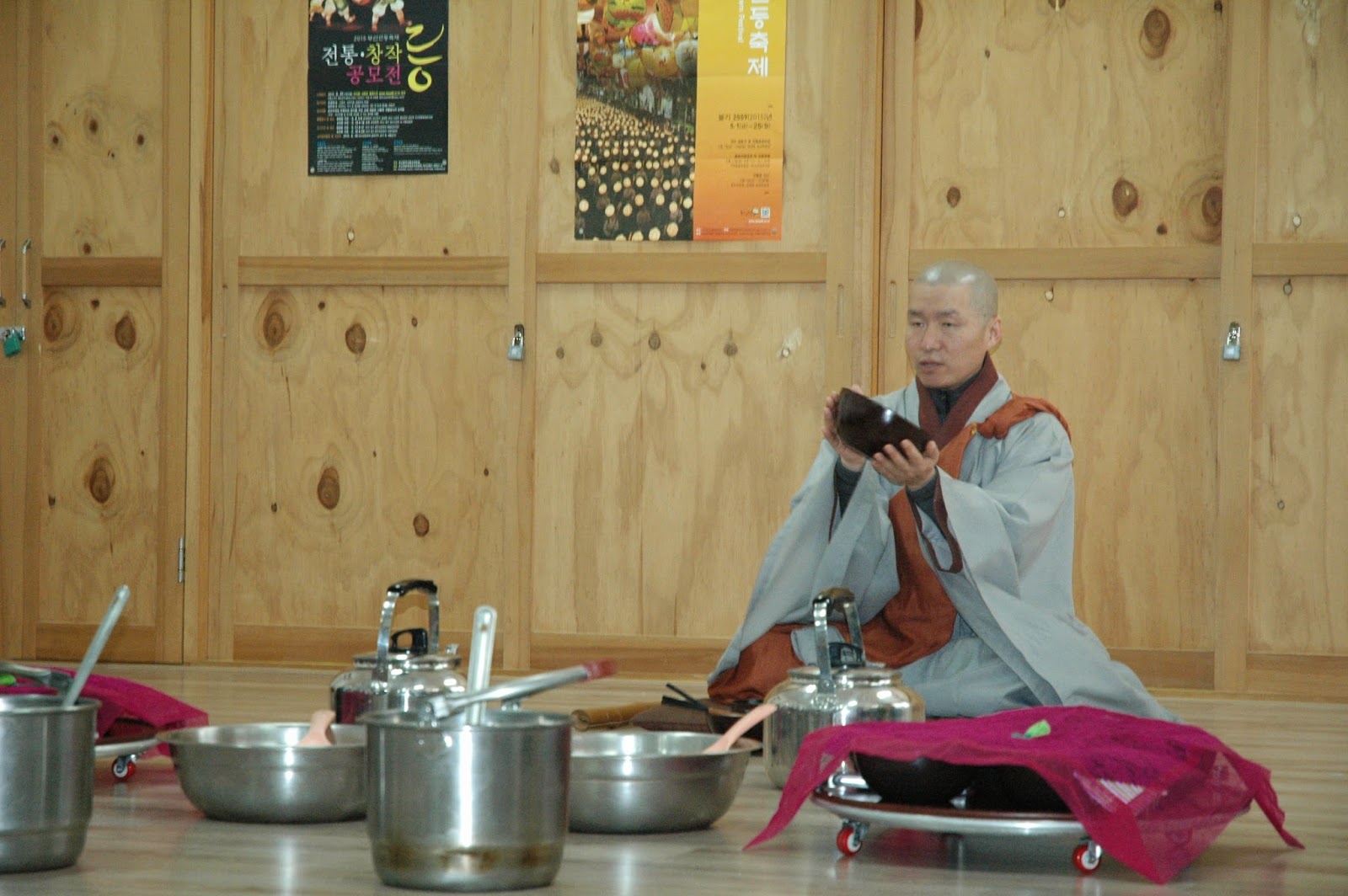Respecting
cultural and religious diversity:
After an
amazing and unforgettable culture night, it was time for a wonderful study
visit. On Thursday morning (third day of the workshop) we went to the Beomeosa Temple.
The Beomeosa Temple
is the head temple of the Jogye Order of Korean Buddhism. The Temple is located
in the northern district Geumjeong-gu in Busan, South-Korea. The Temple is
built on the slopes of Geumjeongsan, it is one of the country’s most known
urban temples.
 |
| View from the Beomeosa Temle |
 |
| View from the second gate |
The Beomeosa
Temple was constructed in 678 during the reign of Silla king Munmu, by the monk
Uisang. At its largest, during the Goryeo dynasty, it was much larger than it is
today- with over 360 rooms and more than a thousand monks in residence. You can
find more about the history of the Temple on the internet; I’ll talk more about
the experiences during the study visit.
First of all
I want to thank our guide mister Kim Man II. We couldn’t imagine any better
guide. His enthusiasm, his experience, his origin and his belief in the power
of youth, was amazing.
We started
the visit at the front gate (Iljumun). There were three gates before you
actually enter the Temple. At the first gate, called the “One-Pillar Gate”,
because when viewed from the side the gate appears to be supported by a single
pillar symbolizing the one true path of enlightenment which supports the world.
There you had to let go all your thoughts, all your bad thoughts, all your
doubts, all your prejudices so your mind is open and clear to enter the
Beomeosa Temple.
 |
| Iljumun (front gate) |
When you arrive at the second gate and you didn’t let go of
these thoughts, the four terrifying creatures (Four Heavenly Kings) would make
sure you did. The four kings were also guarding the entrance to the temple.
 |
| One of the four heavenly kings at the second gate |
The
third gate, Beomeosa Burimun, or Gate of Non-Duality is the final gate before
entering the main temple. This gate symbolizes connection, the concept that the
realm of Buddha and this world are the same.
 |
| On the way to the third gate, Beomeosa Burimun |
At every
gate the guide made the link with GCED; how we have to let go of our
prejudices, how we have to believe that we are all the same, how we are all
connected, we have to look at the world and into your true inner-self with a
clear and open mind.
 Once we were
in the garden of the temple the most impressive part of the complex for me was
the Hall with the large drum and huge bell to get the attention of every creature (all the
creatures in the sea, all the creatures in the air/ heaven, all the creatures
on earth and all the creatures under the earth) to let them know that they will
start praying, meditating at the Temple.
Once we were
in the garden of the temple the most impressive part of the complex for me was
the Hall with the large drum and huge bell to get the attention of every creature (all the
creatures in the sea, all the creatures in the air/ heaven, all the creatures
on earth and all the creatures under the earth) to let them know that they will
start praying, meditating at the Temple. |
| Dae Woong Jeon (Buddha Hall) |
At the other side of the garden, there is the main
Hall, the Dae Woong Jeon (Buddha Hall). While mister Kim give us more
explanation about the Buddha Hall, he told us that mother love is the most
beautiful thing in the world. Standing there, at that amazing place, with all
these amazing people around me thinking about what the most beautiful thing in
the world is, made me very quiet and let me realize that mother love is the most
beautiful thing in the world.
 |
In front of the Buddha Hall (PS. It was a very cold day) |
After a
spiritual, emotional, interesting and amazing morning at the Beomeosa Temple we
went to have traditional Temple food in the traditional way. What an
experience!!
We were
guided by a Monk who explained us how to prepare for eating, how to eat and how
to clean our bowls in the correct way. Following pictures will give you an idea
of the tradition. If you want to know the details, I recommend you to visit the
Beomeosa Temple and to have traditional Temple food. Enjoy!
 |
| The beginning |
Meal chant:
Where has this food come from?
I am ashamed of eating it.
I will take it as medicine
to get rid of greed in my mind
and to keep my physical being
in order to achive enlightenment.

 |
| Cleaning our bowls |
 |
| Traditional Temple food |
 |
| We have to finish everything we take |
 |
| Ready to start eating |
 |
| But first the rules, how we have to eat |
It's because of our own perspective that we think the water we cleaned our bowls in is dirty and unhealty to drink. There is nothing wrong with the water, the water is drinkable and the bits that are in the water are leftovers from the food you've just eaten. We have to learn to put our perspectives aside. To let go of our prejudices, our stereotypes. How we address
things, how we respond to it is from our own perspective. But we have to learn
how to let go of our own perspective and look at things in another way, from
the perspective of other human beings, other citizens.




Geen opmerkingen:
Een reactie posten